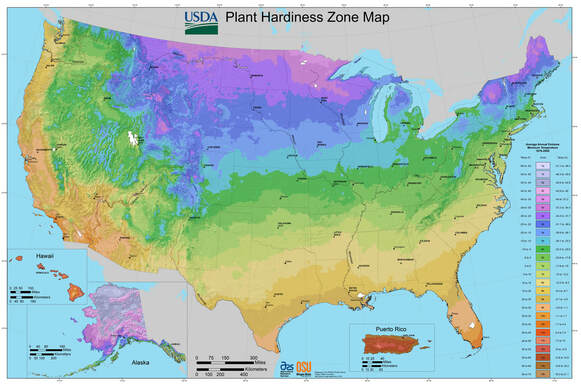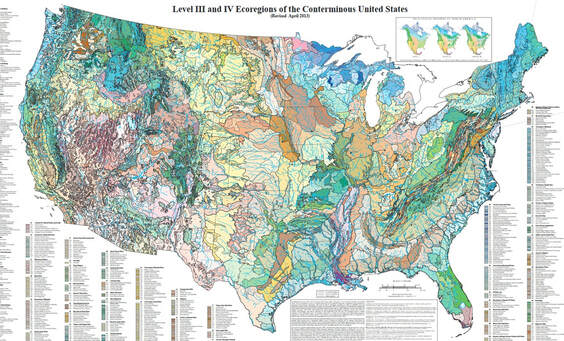The USDA not only offers a hardiness zone map, but several ecoregion maps. Ecoregions focus on plant communities, and this will mostly if not entirely mean the use of native plants adapted to your region and the wildlife that live there. Let's compare two maps -- first what we're used to, then where we probably need to go.
You're maybe thinking, ok great, now how do I find what's native to me? Here's what we suggest, which is based on the more in-depth presentation Starting Your Native Plant Garden:
1) Consult with regional plant lists created by The Xerces Society, Pollinator Partnership, and Audubon.
2) Once you have some plants you think might work on your site, further match them on the county level via a search at either BONAP or the USDA.
3) Then learn how the plants reproduce and their further cultural information. For much of the Plains and Midwest, we rely on a few sources to gather and collate horticultural details: Prairie Moon Nursery, Illinois Wildflowers, MOBOT, and the Lady Bird Johnson Wildflower Center. There are many others, for sure, including regional native plant societies, nurseries, county extensions, and books, like Field Guide to Wildflowers of Nebraska and the Great Plains as well as Jewels of the Plains.
So that's how you start, and if the journey seems complicated or long then that is ideal since you will learn so much more about your region and climate and wildlife than you ever dreamed possible -- and applying that knowledge to garden design and management will be a very good thing, indeed. Prairie up.




 RSS Feed
RSS Feed

